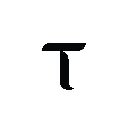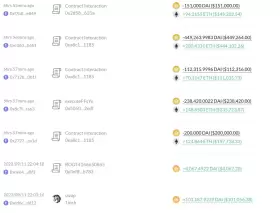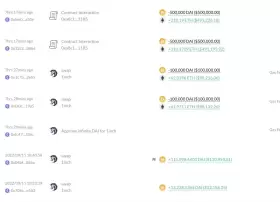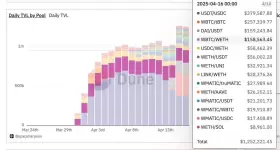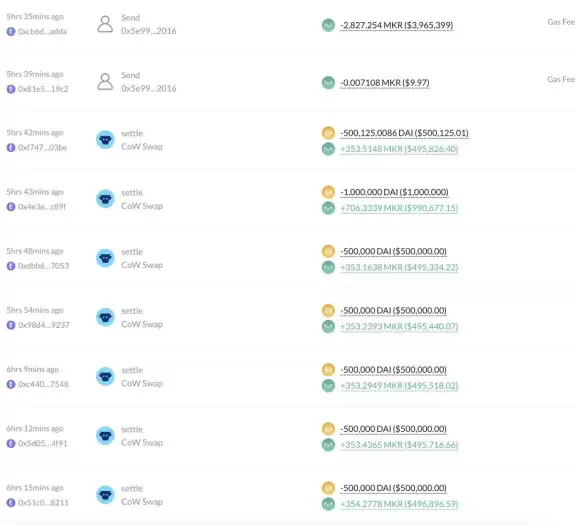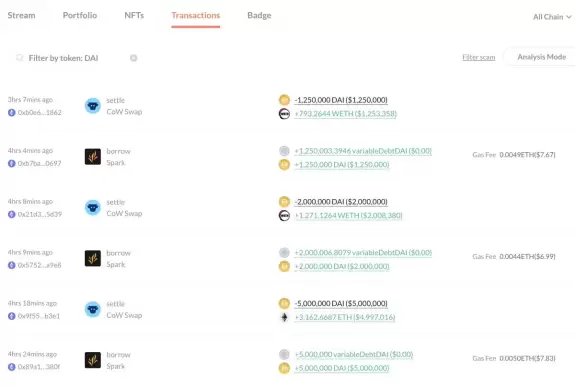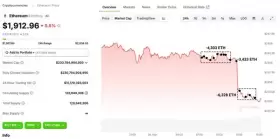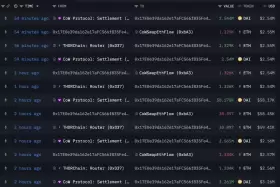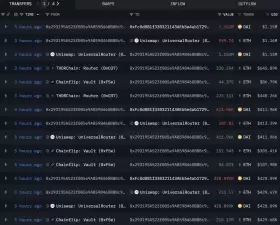Communtity feeds
-

- Twitter source
- Lookonchain Apr 18, 2025 at 10:08 am
Two wallets that had been dormant for 949 days just came back to life—spending 12.37M $DAI to buy 7,738 $ETH at $1,599 about 7 hours ago. One of them has already deposited part of the $ETH into #TornadoCash. Address: 0x1131e0edfe625d2aab9c9868da5ec3c5c27e78c5


-

- Twitter source
- agglayerzone Apr 17, 2025 at 02:46 am


-

- Twitter source
- Pulse Alerts Apr 16, 2025 at 01:48 pm
9.8b $WPLS just bought for 500m $DAI (239k USD) https://apphex.win/@/#/tx/0xdf1a067b33956f3bb9b9cde728e843a33d986f29cff0ac6f8adf5531ca525fd1… -

- Twitter source
- Mario Nawfal’s Roundtable Apr 10, 2025 at 07:15 pm
-

- Twitter source
- Lookonchain Apr 10, 2025 at 12:27 pm
A whale spent 4M $DAI to buy 2,827 $MKR at $1,415 6 hours ago. https://debank.com/profile/0x0e342f1bf748888960e24f03f836768e83d88cee/history…
-

- Twitter source
- Lookonchain Apr 07, 2025 at 09:12 am
A whale borrowed 8.25M $DAI from #Spark to buy the dip — buying 5,227 $ETH at $1,578. https://debank.com/profile/0x7099c7d7fca074062a0fc593a35f788605bcad6e…
-

- Twitter source
- Mario Nawfal’s Roundtable Mar 28, 2025 at 05:45 pm
-

- Twitter source
- Lookonchain Mar 28, 2025 at 04:33 pm
Hackers are dumping $ETH! 2 new wallets(likely related to hackers) received 14,064 $ETH from #THORChain and #Chainflip, then dumped for 27.5M $DAI at an average selling price of $1,956. https://intel.arkm.com/explorer/address/0x17E0e39da162e17aFC566f835Fe41a5DF56E4EA5… https://intel.arkm.com/explorer/address/0x293195A523f005e9A8598460BBBc9F5e89B235D2…


-
- Twitter source
- {{val.author }} {{val.createtime }}



















